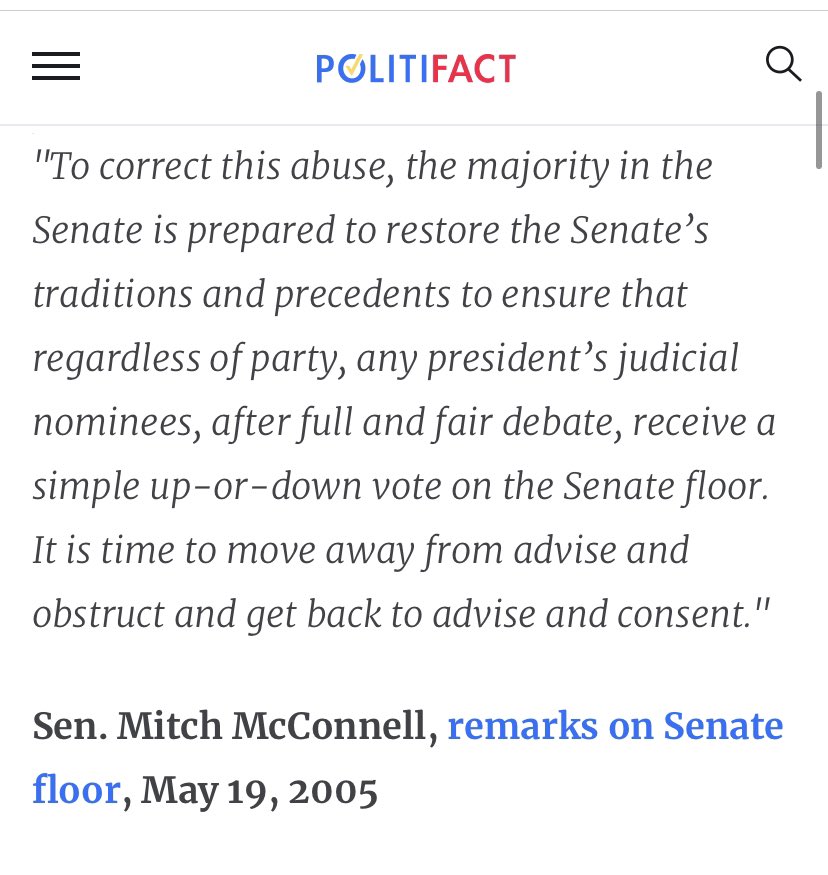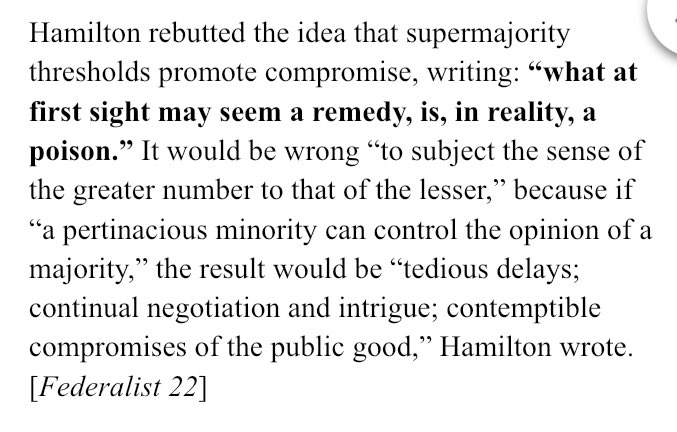
The question of whether to reform the filibuster boils down to whether we want a functional government or a dysfunctional one. This is how the Framers saw it. This is why they opposed the filibuster or anything like it, and why they created the Senate as a majority-rule body. 1/
Madison called majority rule the “republican principle.” He was consistent, from when he was a young man crafting the Constitution until the 1830s, when he was asked to respond to Calhoun’s argument that the minority should get to wield a veto over the majority (Madison said no). 

Madison zeroed in on the principle that if the minority were allowed to wield a veto over the majority, “the fundamental principle of free government would be reversed.”
The reason? “The power would be transferred to the minority,” he said.
That’s exactly what Sinema is doing.
The reason? “The power would be transferred to the minority,” he said.
That’s exactly what Sinema is doing.

Hamilton took on critics (like Sinema) who argued a supermajority threshold would be a force for compromise. He & the Framers knew that “what at first sight may seem a remedy, is, in reality, a position” because “its real operation is to embarrass the administration.” Prophetic! 



The reason the Framers were so focused on this question of majority vs supermajority rule is that they saw what happens when a legislature has a supermajority threshold. The Articles of Confederation required a supermajority for most major legislation and was a complete disaster.
The Framers created the Senate as a majority-rule body. Period. It was majority-rule from its inception through the first half of the 20th century. Period. The filibuster emerged in the 19th century, and while it sometimes delayed bills, it very rarely stopped them altogether.
The rule that today allows the minority to impose a supermajority threshold is Rule 22. It was introduced in 1917 ~ironically~ to fight obstruction. The presumption was that bills would be majority-rule, but when a bill encountered a rare filibuster, a supermajority could end it.
Rule 22 put a supermajority threshold for regular bills on the Senate rule books for the first time, in 1917. The Senate then proceeded to perform a decades-long experiment that tested who was right: advocates of a supermajority threshold (like Sinema today), or the Framers.
The issue at stake was civil rights. During the Jim Crow era, the only bills consistently forced to clear a supermajority threshold were civil rights bills. Bills on most other topics still passed or failed on majority-rule votes. Guess what? All civil rights bills failed.
During Jim Crow, civil rights bills did not fail for lack of public support. Gallup found anti-lynching bills with 72% support in 1937 & anti-poll tax bills with 60% support in the 1940s. They passed the House by big margins and presidents of both parties were ready to sign them.
During Jim Crow, civil rights bills failed because unlike other bills, they were forced to clear a supermajority threshold in the Senate while other bills were allowed to pass or fail on a majority basis - just as all bills had for the entire history of the Senate until then.
Self-avowed white supremacy motivated Jim Crow-era southern senators to force civil rights bills to clear a supermajority threshold, but the results of their experiment were clear: when bills were forced to clear a supermajority, the result was not compromise, but gridlock.
Fast-forward to today. For a bunch of reasons, the filibuster slowly became more common from the 1970-2000s. Not by any affirmative decision - to be clear, the Senate never, ever decided to require a supermajority for passage. Rather, senators just kind of backed into it.
• • •
Missing some Tweet in this thread? You can try to
force a refresh









